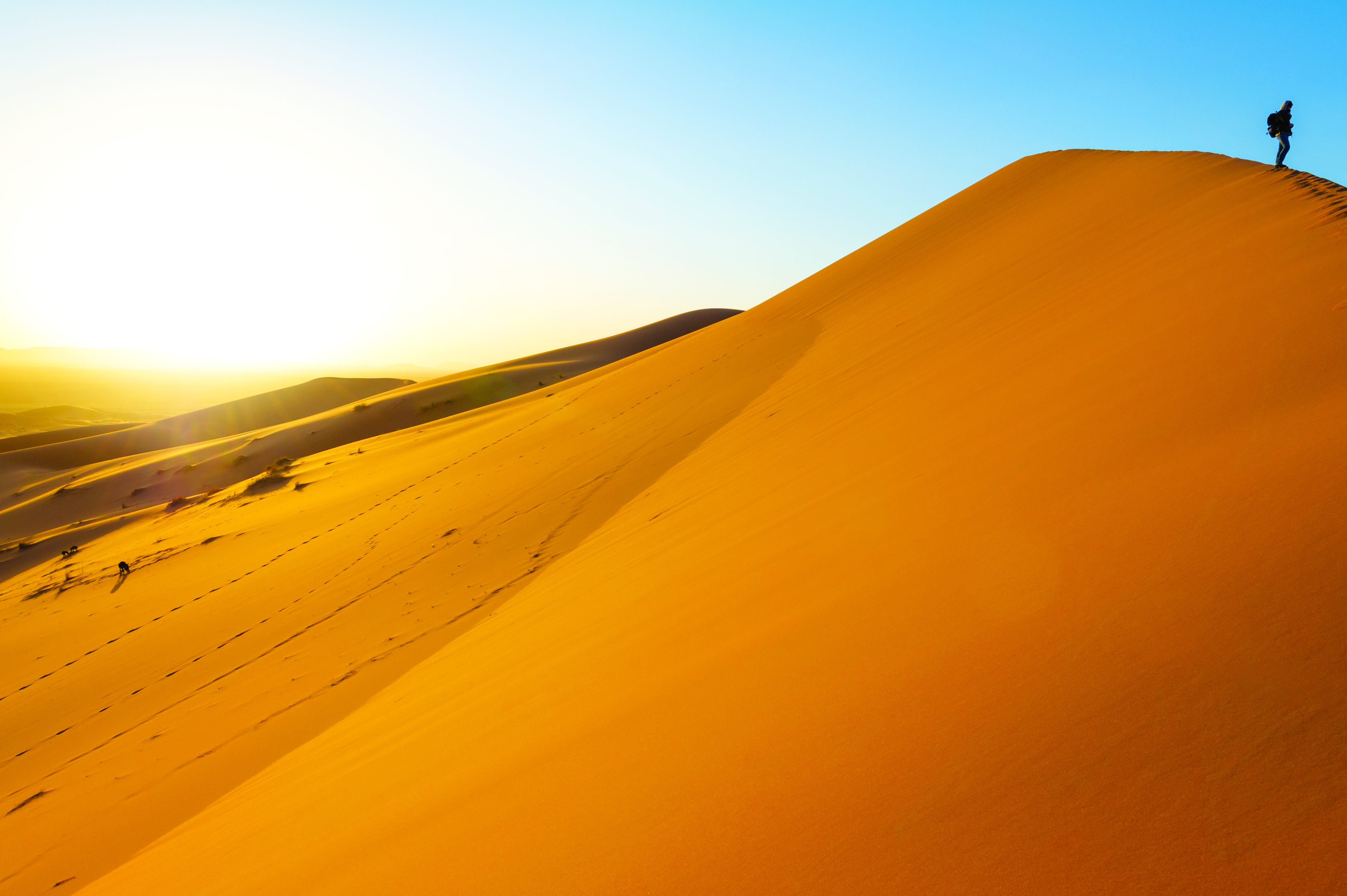
The most relatable attires when we think ‘summers’ are shorts, sleeveless shirts, and floppy sandals. And if someone said ‘desert’, we’d probably just swap the floppy sandals with a pair of sneakers. But the truth is that desert-wear is quite different from what most of us might just casually strut out in. Research proves that an individual who is fully clothed can survive 25% longer than one who goes with typical summer shorts and strappy vests. The scorching sand, rising heat levels, and dry winds has its own set of dos and don’ts when it comes to clothing. And that’s only half the story. Then there are the nights which are quite different from the day.
As the weather is getting better, most of us are starting to get a little more adventurous with treks, camping plans and some fun under the stars. And what’s one of the most popular getaway spots? Why Oman’s deserts of course; some dangerously explored, some infested with tourists and campers, while some, relatively still uncharted. Whatever be your choice, make sure you are dressed to tackle the dunes. (And you don’t need to look like a nomad while doing so!)
Long pants
First and foremost, it doesn’t include jeans. Go for khakis or cargo pants that are loose and allow ample air passage between the fabric and your legs. Wearing longer pants as opposed to shorts will also ensure that you don’t get any cuts or bruises from thorns or jagged rocks.
Full-sleeved shirts
Look out for cotton and nylon in light colours. Figure-hugging T-shirts aren’t a good idea for the desert. Opt for loose shirts that will let your skin breath. Go for round collars instead of deep V-necks as open necks can cause sunburns on the chest.
Dressing tip: Remember to cover up as much as possible in the desert. The more skin you expose to the sun, the more your body loses moisture and the sooner you’ll get dehydrated.
Lightweight desert boots
It is absolutely essential that your shoes are comfortable or you aren’t going ahead on that trek. Open shoes or sandals are an absolute no-no. You’ll most likely end up with heat boils on your feet due to the friction with the hot sand. While sturdy boots are a great idea, keep in mind that walking through sand is way harder, so you’ll want your boots to also be lightweight so you aren’t trudging your way forward.
Long sweat-wicking socks
Shoes without the right socks can be a disaster as it forms the lining between your skin and shoes. Even if your feet feel fine initially, as the heat levels rise, your feet will start perspiring. Make sure the socks are made of sweat-wicking fabric. Though we’d recommend cotton everywhere else, we’d say a strict ‘no’ when it comes to socks. It may seem strange but woollen socks are a good choice. Skip the style element here and go for socks that actually go way past your boots. There are two reasons for this. One, you don’t want to leave any room for things to crawl up; and two, you want to prevent any chaffing on your ankles from your boots.
Sunglasses
Protect your eyes from the scorching sun with a pair of good quality shades (and please don’t go for the cheap alternates in this case as they really don’t serve the purpose). Sunglasses not only act as a shield from the sun rays but also the dust that blows on arid lands.
Hat
Go for wide-brimmed hats instead of caps as the latter will leave your neck and ears exposed. Get one that fits well or at least has a chin strap so you aren’t chasing it around when the wind blows.
Bandana
Soak a bandana in cold water and tie it around your neck to keep cool. The only thing - you might have to do this multiple times as the hot winds can dry it in no time.
Extra: A hooded jacket for the nights – The nights can be a pleasant change from the day. But cooler months mean that the nights are going to be more than just pleasant. It’ll be cold, pretty cold! If you have a higher tolerance to cold, a fleece pullover should be adequate. For others, a warm snug jacket that has a hood would work perfectly. The hood not only keeps the ears covered (which would give additional warmth) but also protects the head from falling dew which is common in the desert at night.
Antara Bose is a model turned fashion and beauty consultant. A popular blogger, anchor, and voice over artist, she maintains a deep connection with the local fashion industry and is passionate about discovering and celebrating aspiring talent as well as promoting animal rights. For fashion updates with a side of humour and sarcasm follow Antara on instagram
@antarabose and on Facebook (Antara Bose)